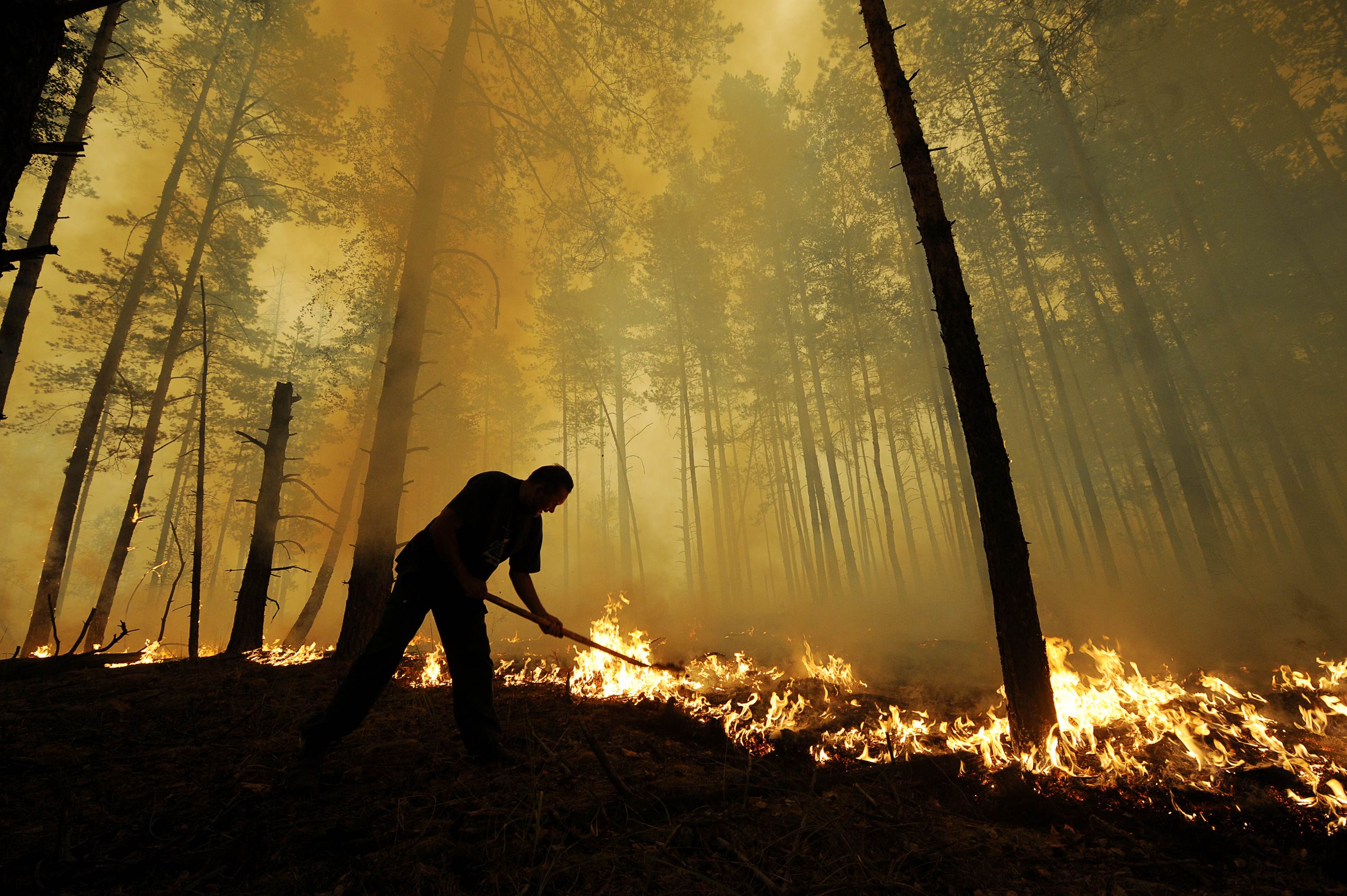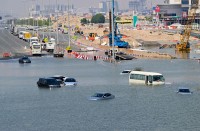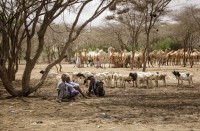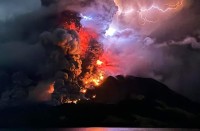
Russia’s practice of leaving massive wildfires to burn out of control in sprawling stretches of Siberia puts at risk a key global resource for absorbing climate-warming emissions: its trees. / AFP PHOTO /
by Maria ANTONOVA
MOSCOW, Russia (AFP) — Russia’s practice of leaving massive wildfires to burn out of control in sprawling stretches of Siberia puts at risk a key global resource for absorbing climate-warming emissions: its trees.
The blazes are consuming millions of hectares of pristine Boreal forests in Russia, which are second only to the world’s tropical jungles in capturing planet-warming carbon emissions.
At the same time, the drier and harsher conditions associated with a warmer climate — last June was the hottest ever recorded — are contributing to the fires becoming ever bigger and more common.
Russia’s forests annually absorb a net 500 million tonnes of carbon from the atmosphere, said Anatoly Shvidenko, who spent decades in the Soviet forestry system and served as an expert for the UN’s Intergovernmental Panel for Climate Change (IPCC).
That figure is the equivalent to the emissions put off over a year by 534 coal-burning power plants.
With expected climate change and current levels of forest protection in Russia, “forest fire danger and carbon emissions will double or triple by the end of the century,” added Shvidenko, saying authorities pay less attention to the problem now than in the 1990s or the Soviet era.
The thinning forests are most evident in northern Siberia, where fires can ravage plant life and shallow roots, making it impossible for trees to regrow for centuries.
Russian forest scientists call the process “green desertification,” said Shvidenko.
“According to remote sensing data, an average of 3 million hectares of forest dies annually, 90 percent from wildfires,” he said.
Summer forest fires hit eastern Russia every year, with underfunded government agencies unable to contain them over the huge expanses of Siberia. However, this year has been particularly bad.
Activists and experts say satellite data shows the damage is up to 10 times what the government claims.
“Already seven million hectares have burned, that’s more than average,” said Grigory Kuksin, who runs the wildfire prevention program at Greenpeace Russia.
“Everywhere it’s the same scenario, where a small fire is ignored and then goes out of control,” he added, estimating the forest protection system only receives 10 percent of the funding it needs.
Experts have also pointed to worsening blazes.
“The amount and intensity of fires is going up and Russia is burning more than other countries,” said Shvidenko.
Scientists have been sounding the alarm over the fate of the planet’s boreal forests, also called taiga, which wrap around the northern hemisphere covering vast areas mainly in Canada and Russia, where they constitute 90 percent of all forest cover.
‘Natural’ fires
Wildfires in Canada this year have already amounted to the costliest disaster in the country’s history by causing $2.75 billion (2.47 billion euros) in damage, displacing about 100,000 people and sweeping through more than a million acres (405,000 hectares) of forest.
In Russia, 43 million hectares of forest managed by the national forest agency was lost between 2000 and 2011, mostly in the Far North, Shvidenko said, an area almost the size of Iraq.
This, combined with growing wildfires, could alter the role of Russia’s forests as a carbon sink, currently second only to the world’s tropical forests.
Kuksin of Greenpeace said drier and hotter summers have extended the fire season in Russia, but that 99 percent of wildfires are still caused by humans and the government should do more to prevent them.
“If they start reacting on time to small fires, everything will be okay,” he said.
Officials accuse Greenpeace of exaggerating the problem but recognize that climatic changes may be making an already serious situation worse.
A drier climate has led to more dry thunderstorms that cause fires in remote areas, according to Russia’s aerial forest protection service that commands some 3,500 smokejumpers, highly trained wildland firefighters who parachute into the blazing wilderness.
“The number of dry thunderstorms has grown in the past decade,” service chief Vladimir Grishin told a press conference. “This time this year it’s 10 times greater than last year.”
The forest agency is introducing new techniques to contain fires in remote areas, including cloud seeding with silver iodide, which was tried out successfully this month, Grishin said.
Russia’s forestry agency chief Ivan Valentik said however that most wildfires that don’t threaten people will likely only be monitored not extinguished.
“Not a single country has any desire or capability to stop natural fires that don’t threaten towns or economic infrastructure… there is not a single reason to attend to them,” he said.
© 1994-2016 Agence France-Presse







